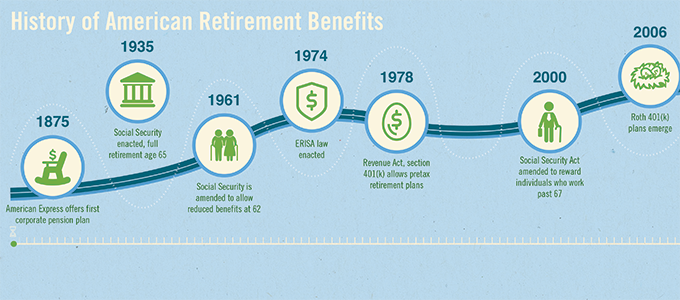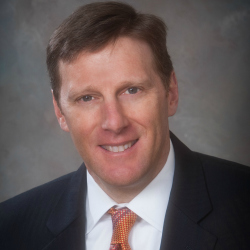You get what you pay for.” This adage rings especially true in the business world. Low salaries generally attract mediocre talent. Cheap technology is often inefficient and can require costly repairs. And free employee assistance programs can incur high health care costs for employers.
The current EAP usage rate across the industry is 6.9 percent, according to the Chestnut Global Partners’ 2016 EAP industry trends report. With so few employees using a practically free service — the typical employer allots just 1 percent of its health care budget to EAP services — it seems counterintuitive that EAPs would cost employers a lot in the long run.
The cost of providing access to an EAP has dropped in recent years, but unfortunately so has the quality of the programs being provided, according to Kent Sharkey, president and CEO of Ulliance Inc., a Troy, Michigan-based human resources consultancy.
When Sharkey started his company 26 years ago, the average per-employee-per-month fee for an EAP was $2.50. In order to stay competitive after the financial crisis of 2008, EAP providers have dropped that fee below a dollar, Sharkey said. Unfortunately, lower prices can often mean poorer services.

EAPs were originally developed to provide assessment and services for addressing a variety of personal problems and concerns that interfere with employees’ well-being and work performance. Interventions for issues such as depression and substance abuse were delivered in person, by telephone or over the Internet by licensed counselors. EAPs typically offered employees up to six of these sessions, said Dave Sharar, chief clinical officer at Chestnut.
The problem, Sharkey said, is that many of today’s free EAPs operate on an assess-and-refer model. Employees call the EAP phone number provided by their employer, but instead of receiving traditional telephonic counseling, they are referred to a long-term treatment provider outside of the EAP. This triggers a claim on the employer health care plan.
And given the rising cost of health care to both employers and employees, the last thing either party wants is to trigger more claims.
“If you’re experience-rated — meaning every year your insurance company looks at the health care costs — then your premiums will go up or down based on utilization,” Sharkey said. “If your EAP is merely directing more traffic to your health care plan, then it’s costing you and your employees a ton in the long run.”
The solution is for employers to increase their level of engagement with the EAP, according to Matt Mollenhauer, managing director at Chestnut.
“I would suggest to an employer that what they really need to do is dig deep into EAPs and ask questions,” Mollenhauer said. “They may be falling way short of what they thought they had purchased. There needs to be employer investment in the product they are buying.”
Know Why They’re Going
The first thing every employer should do in regard to managing their EAPs better is look at the usage rates, Mollenhauer said.
“The sense we’re getting from our book of business and EAP colleagues is that utilization of the EAP is on the rise compared to the past,” he said. “But that’s just the outer layer. The larger issue is that there seems to be more stress in the workplace, and the severity of cases appears to be on the increase.”
According to Chestnut’s 2016 report, stress-related issues were the top reason employees in North America accessed an EAP in 2015, accounting for 21 percent of EAP usage in that region.
While the increase in usage could be because of employers’ efforts to increase awareness of their EAP offerings, it’s the increase in severity that’s troublesome to Mollenhauer and Sharar.
“Employees are trying not to use their health care benefits because of the expense,” Mollenhauer said. “They are going to the EAP first. Stress within workplaces, either economic or work-related stress, is causing employees to a little ‘white-knuckling’ where they’re waiting too long to seek support.”
Providers such as Chestnut are seeing a response directly from employees that they need more than the standard six sessions to resolve their issues, Sharar added.
“More people are using their EAP because there’s no deductible or copay for it,” Sharar said. “Employees want to use it as much as they can.”
Free, or embedded EAPs as they are also known, are not flexible and typically don’t allow employers to make model changes midyear. Employers who are looking to be responsive to employee needs must stay on top of usage patterns and invest in standalone models that allow faster response times, Sharar said.
“Employers who are engaged with the EAP often invest in a ‘high touch’ program where they see the EAP integrated with an overall benefits strategy,” Sharar said. “When you understand how your employees use their benefits, you can ask for flexibility to meet those needs in a way that incurs the lowest possible costs.”
Get HR Involved
Even though EAPs are designed as a confidential service for employees, that doesn’t mean that a company’s human resources department shouldn’t be actively engaged with the EAP provider. Providers with HR and account management services are able to intervene before problems escalate., Sharkey said.
According to Ulliance’s book of business from 2015, performance issues ranked as the No. 3 issue among employees, behind substance abuse and anger management, respectively.
“We work with human resources to intervene with employees who have a personal problem that has developed into a performance problem,” Sharkey said. “We help employees get back on track before they seek medical help through the health insurance plan for issues including anxiety and depression.”
Developing a relationship in which HR personnel can directly refer employees to the EAP prevents a problem from festering, Mollenhauer added.
EAPs have also proven useful in dealing with a growing issue for HR managers: marijuana usage among employees. While it’s legal is some states, marijuana remains illegal on a federal level. The conflict creates problems for employers with offices in several states that currently have a zero-tolerance drug policy, Sharkey said.
“In response to employer feedback, we developed a program through which we provide random drug testing,” Sharkey said. “It gives employers an alternative to either terminating or tolerating an employee who has marijuana in their system. An employee who tests positive is formally referred to the EAP and undergoes random drug testing and counseling.”
Unlike employer-sponsored drug rehab programs, EAP-provided services require the employee to release their personal information so that the employer knows whether the employee is attending counseling and passing drug tests, Sharkey said.
In addition, the counseling occurs face to face, which has proven to be a more effective method of delivery.
Don’t Let Technology Become a Distraction
Like seemingly everything else in the workplace, technology is entering the EAP field with the promise of offering on-demand access to needed counseling services.
“The intent behind it is to create better-enhanced access for millennials and younger workers that are far more technology-driven,” Mollenhauer said.
Online counseling completed through synchronous or asynchronous emails and secure video conferences where counselor and client interact over a computer or mobile device are the first steps into implementing technology to modernize the offering, Chestnut’s Sharar said.
Sharkey thinks it’s an especially good outlet for millennials who are comfortable interacting on more of a digital platform, but he still believes in the tried-and-true method of face-to-face counseling.
“I believe it’s a great first step for people who are reaching out to the EAP, but there’s nothing like meeting face to face and developing a rapport with your EAP counselor and coach,” Sharkey said. “A lot of research and counseling suggests that the most important factor is the relationship between counselor and client.”
The American Psychological Association conducted a study in 2002 that found 31 percent of respondents reported an improved mental state after telephonic counseling compared with 54 percent with those who received face-to-face counseling.
Sharar worries that an attempt by employers to save on costs might be hurting employees in the long run.
“People with more serious issues may think that they’re getting things addressed with a telephone call or online chat when they actually have a more serious issue with a substance-abuse problem or marital issue that is not being dealt with,” Sharar said. “EAPs need to be careful of when technology is being used as a supplement vs. when it becomes a replacement.”
There is also a clear distinction between the type of technology being used. Mollenhauer is comfortable with the telephone and videoconferencing that have typically been used, but is more leery of the use of apps.
“Tracking mood and looking up marital tips on an app has a flashy appeal, but as fancy as all of those are and as engaging as they are in the short run, there is little research to suggest their long-term sustainability or that they are even clinically valid,” Mollenhauer said.
At the end of the day, there is clear value in the direct interaction provided by going in to see a counselor. Sharkey compares his counselors with coaches who observe employee behavior and are able to offer suggestions and support after developing a rapport with an employee client.
“We use a solutions-focused counseling model,” Sharkey said. “Sometimes people aren’t aware that what they are doing is harmful. We do an assessment and develop a personal action plan that includes assigning homework throughout the week. An hour of counseling doesn’t change things. It’s when you apply it in the real world and see what actually works that makes a difference. In a counseling office, it’s always easier than when you talk to your significant other about a problem. You have to be agile, and face-to-face counseling allows that.”
While high-tech apps and videoconferences over cellphones could increase usage rates, Sharar warns against using “clicks” as a measure of an EAP’s effectiveness.
“We tend to get caught up on high utilization has the most important metric,” Sharar said. “But high utilization doesn’t speak to specific results or what happened with those people who used the service. Website clicks and phone calls don’t directly lead to an outcome.”
Return on investment calculates an investment purely on financial terms, Sharar said. The EAP is so inexpensive to begin with that employers should focus on getting fewer, more effective outcomes than trying to see how many employees they can cycle through.
“I hope we’re moving back into a trend where employers very consciously engage with the EAP as a valued business partner,” Mollenhauer said. “In the times of cost-cutting, employers have gone with free and I’m hoping that trend will reverse and employers will see that there is no value proposition in those ‘free’ programs. EAPs need to evolve to the point where they’re being integrated to help solve employee performance and resiliency issues.”
 It all started with a doughnut.
It all started with a doughnut.











